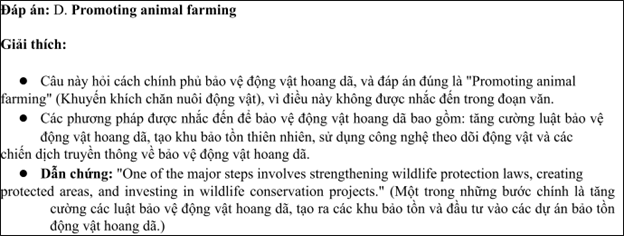There are currently thousands of species of animals at risk of extinction worldwide. Many of these species are under threat due to human activities, such as deforestation, illegal hunting, and climate change. However, governments around the world have been taking action to protect endangered species and their habitats. One of the major steps involves strengthening wildlife protection laws, creating protected areas, and investing in wildlife conservation projects.
For instance, in Africa, the governments of countries like Kenya and South Africa have established vast national parks and wildlife reserves to safeguard species such as elephants, lions, and rhinos. These protected areas allow animals to roam freely without the threat of poaching or habitat destruction. Additionally, strict anti-poaching laws have been enacted, with severe penalties for those caught hunting endangered animals illegally.
Furthermore, technology plays a key role in protecting wildlife. Many countries now use drones and satellite technology to monitor wildlife populations and track animals' movements. Anti-poaching units rely on high-tech equipment like night-vision cameras and thermal imaging to catch illegal hunters. Social media and online campaigns have also helped raise awareness about wildlife conservation and mobilized global support for protecting endangered species.
In some regions, governments are working closely with local communities to ensure the sustainable use of natural resources. For example, in the Amazon rainforest, indigenous tribes have been supported in their efforts to combat deforestation and protect the wildlife living there. The hope is that by involving local people in conservation efforts, the protection of endangered species will be more effective and long-lasting.
(Adapted from animals news)
Câu 23. Which of the following is NOT mentioned as one of the ways governments are protecting wildlife?
A. Increasing the number of national parks B. Strengthening anti-poaching laws
C. Using technology to monitor wildlife D. Promoting animal farming
Câu 24. The word “extinction” in paragraph 1 is OPPOSITE in meaning to:
A. survival B. awareness C. protection D. evolution
Câu 25. The word “These” in paragraph 2 refers to:
A. endangered species B. wildlife reserves
C. wildlife protection laws D. poaching penalties
Câu 26. The word “monitor” in paragraph 3 could be best replaced by:
A. observe B. distract C. ignore D. prevent
Câu 27. Which of the following best paraphrases the underlined sentence: "Technology plays a key role in protecting wildlife" in paragraph 3?
A. Technology is the only way to protect endangered species.
B. Technology helps to track wildlife and reduce illegal hunting.
C. Technology should be used only for wildlife research.
D. Technology can never replace human efforts in wildlife protection.
Câu 28. Which of the following is TRUE according to the passage?
A. Technology has no role in wildlife protection.
B. Governments work with local communities to protect wildlife.
C. There are no wildlife reserves in Africa.
D. Indigenous people are prohibited from using natural resources.
Câu 29. In which paragraph does the writer mention the role of local communities in wildlife conservation?
A. Paragraph 1 B. Paragraph 2 C. Paragraph 3 D. Paragraph 4
Câu 30. In which paragraph does the writer explore modern methods for protecting wildlife?
A. Paragraph 1 B. Paragraph 2 C. Paragraph 3 D. Paragraph 4
Second Semester Midterm Exam GRADE 12 Test 16









